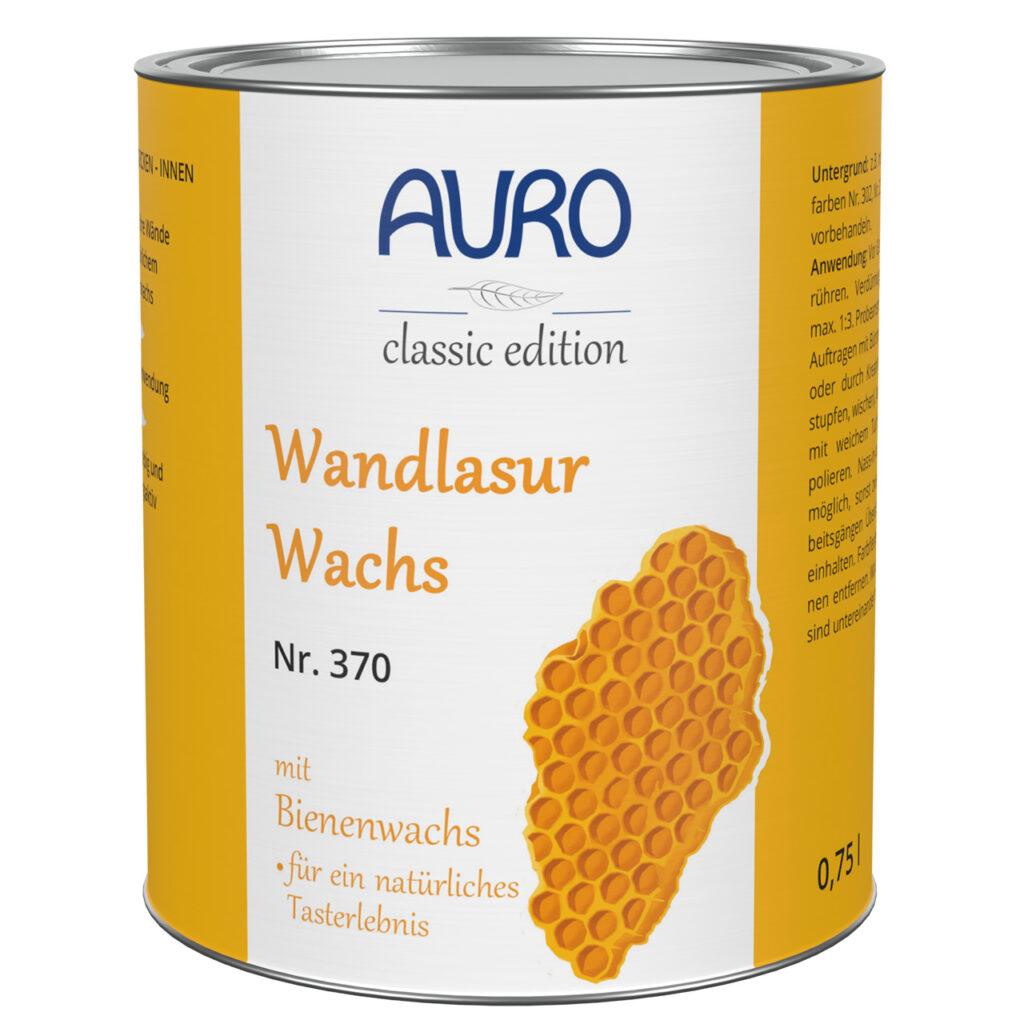Instructions
Painting wall glaze wax
Coating technique
The brushing technique prevents typical brush structures when applying glazes to large areas. To do this, a brush is moistened, squeezed out well and only the bristle tips are dipped into the mixed, water-thin paint. Then beat well so that the paint does not run out. Spread the glaze over the wall in a quick circular motion (“figure of eight”). By glazing several layers of different colors on top of each other, an almost three-dimensional depth is created. Each coat must be thoroughly dry.
Stippling technique
Vivid depth effects can also be created by dabbing with a sponge, which is moistened, squeezed out and then soaked full with glaze paint. Dab lightly onto the wall surface to create a dot-like structure. Further dabbing, possibly with a more intense shade, will intensify the effect.
Winding technique
The wrapping technique is an old method of creating natural-looking contrasts on a colored background. A damp, lint-free linen or cotton cloth is wrung out and completely wetted with paint. After wringing it out again so that no paint runs out, the cloth is twisted into a wrinkled wrap and rolled across the wall with light pressure. Rolls with a similar effect are commercially available.
Stencil / spray technique
Using stencils made of cardboard or thick paper, self-designed patterns can be applied in color to a surface or cut out with a positive stencil. Complex shapes are created by applying several overlapping coats of transparent glaze paint. A blunt stencilling brush is a good tool, but an airbrush gun is also suitable for delicate patterns.
The trick with the wax
Rooms subject to heavy use can be impressively designed and protected at the same time with robust wall glaze waxes no. 370. The cheerful, intensely bright glaze colors with additional wax protection are ideal colors for children’s rooms or hallways. The wax is diluted with water according to the desired color intensity and brushed on with a glaze brush (“horizontal eights”) or dabbed onto white walls with a sponge.
Do not get irritated: The wax initially dries to a milky white color and only reveals its full luminous hue when the wax contained in the paint is polished with a soft cloth or brush.
Tip: Paint the colorless version around all light switches (no matter what color you have on the wall)!
This provides invisible protection against the dirt marks that inevitably appear around the switches over time.
Good to know for tenants: The wax layer can be removed with our mild dishwashing detergent No. 473.


